#climate challenges
Explore tagged Tumblr posts
Photo










Essential Homes Research Project,
The housing concept was designed by Norman Foster for displaced communities who are used to living in temporary settlements for years, providing the necessary needs of safety, comfort, and well-being.
The designed prototype is extremely sustainable and emits 70% less CO2 than conventional buildings. It is low-carbon, energy-efficient, and circular, incorporating a variety of Holcim sustainable building solutions.
Holcim and Norman Foster Foundation
#art#design#architecture#interiors#shelter#displaced persons#disasters#norman foster#safety#confort#holcim#sustainable architecture#sustainability#low-carbon#energy-efficient#humanrights#human rights#climate change#climate challenges
249 notes
·
View notes
Text
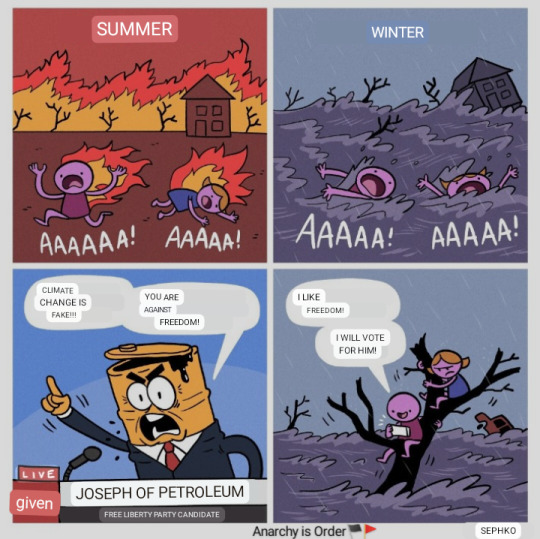
Don't believe what they tell you
#comic#comics#cartoon#climate justice#climate leaders#climate science#ausgov#politas#climate activists ‘may try to wreck the rollout of voter id measures at the local elections’#climate emergency#climate change#climate crisis#climate and environment#climate action#climate challenges#climate chaos#ecological#ecology#econotego#auspol#tasgov#taspol#australia#neoliberal capitalism#fuck neoliberals#anthony albanese#albanese government#earthfirst#san jose earthquakes#earthporn
97 notes
·
View notes
Text

CLIMATE CHANGE "no more snow on the ground after lots of snow "
#montreal#montrealpics#montréal#montrealmoments#montreal city#montreal photography#montreal life#montrealmonamour#mtl#montrealjetaime#montrealstreets#montrealstreet#montrealstreetphotography#montrealstreetart#montreal street style#streetsofmontreal#montrealsnow#climate change#climate challenges
6 notes
·
View notes
Text
Consequences Of Global Warming
Global warming refers to Earth’s average surface temperature increase. Global warming and its Consequences are human-caused environmental issues, and many forces are to blame. The primary cause of global warming is the unregulated release of greenhouse gases due to activities such as industrialization and the usage of fossil fuels. Greenhouse gases trap the Sun’s heat, preventing it from escaping back into the atmosphere and raising the earth’s surface temperature. Almost 95% of global warming is caused due to greenhouse gases. Even if the increase in Earth’s temperature is only 1 degree Celsius, it impacts the ecosystem. Unexpected climate shifts, floods, droughts, rising ocean water levels, melting glaciers, and dwindling aquatic and terrestrial species are just a few of the severe repercussions of global warming.
Several times, we are confused about the proper global warming definition. Global warming definition is “a gradual increase in the earth’s temperature generally due to the greenhouse effect caused by increased levels of carbon dioxide, CFCs, and other pollutants.”
Global Warming is a harmful effect on our environment. Several causes of global warming threaten the survival of life on Earth. One of the reasons that Global Warming is problematic is that it disrupts the planet’s general ecology. This causes flooding, starvation and cyclones.
2 notes
·
View notes
Photo




(via "For Future Generations - Climate Action Design" Canvas Print for Sale by harmzk90)
#findyourthing#redbubble#climate action#climate change#climate crisis#climate justice#sustainability#sustainableliving#sustainableenergy#sustainablefashion#future generations#protect the planet#eco friendly#enviorment art#lunar and earth show#sustainable living#climate challenges#save the planet#go green#ecology#nature conservation#eco conscious#green future
0 notes
Text
Nepal's Hydropower Dream Faces Reality Check Amid Climate Challenges and Monsoon Devastation
Several devastating floods and landslides hit Nepal during this year’s monsoon season. The most recent occurred in late September, affecting millions of people, causing widespread loss of life, and considerable destruction of infrastructure, including ravaging 26 hydropower projects with a total loss of over 1,500 MW of hydropower. In the face of climate-related water shocks, Nepal faces a unique…
0 notes
Text
Ghana Faces Climate Challenges as Extreme Weather Patterns Intensify
Ghana is grappling with increasingly severe climate challenges, as unpredictable weather patterns continue to affect the nation’s agriculture, economy, and daily life. From relentless floods in urban centers to extended periods of drought in rural areas, the nation’s environment is showing signs of significant stress, raising concerns among experts and residents alike. In the past year alone,…
0 notes
Text
Jamshedpur Drenched: Monsoon Rains Slash Deficit
Heavy Downpours Bring Relief, but Urban Areas Face Flooding Challenges Monsoon downpours slash state’s rain deficit but leave Jamshedpur waterlogged. Urban infrastructure overwhelmed as residents navigate flooded streets and health risks loom. JAMSHEDPUR – The state’s rainfall deficit has been significantly reduced by recent monsoon deluges; however, urban areas are currently experiencing severe…
#जनजीवन#climate challenges#drainage infrastructure#Jamshedpur Monsoon#Life#Monsoon Preparedness#public health concerns#rainfall deficit#urban flooding#Urban Planning#waterlogging issues#weather patterns
1 note
·
View note
Text
World Environment Day Every Species Counts!

View On WordPress
#action#activism#activities#advocacy#air quality#awareness#biodiversity#businesses#celebration#ChatGPT nature#Chief Seattle#Climate Action#Climate Challenges#climate change#Collective Effort#commitment#communities#community#conservation#degraded forests#drought#Earth#Economic Growth#Ecosystem#education#endangered#endangered species#engagement#enlightenment#environment
0 notes
Text
How To Keep Your Pet Safe During Natural Disasters, Including El Niño - H&S Pets Galore
How To Keep Your Pet Safe During Natural Disasters, Including El Niño: Preparing For The Worst Natural disasters, including events like El Niño, can pose significant challenges for pet owners. Here’s a comprehensive guide on how to ensure the safety and well-being of your beloved pets when faced with the uncertainties of Mother Nature. Understanding The Risks: Before disaster strikes, identify…

View On WordPress
#adopt a cat#adopt a pet#adopt a pet in kenya#animal safety#bond building#canine behavior#Cat#cat adoption near me#Cat Lovers#cat rescue#cat rescue near me#cats#cats & dogs#cats for sale#clicker training#climate challenges#climate events#communication plan#Consistency#disaster care#disaster planning#dog behavior#Dog obedience#dog psychology#Dog Training#Dogs#Dr. Desmond#Dr. Desmond Tutu#effective training#El Niño
0 notes
Text
We might be the first generation in history that has gone “well, things will only get better when our parents die!”
And that’s pretty weird.
0 notes
Text
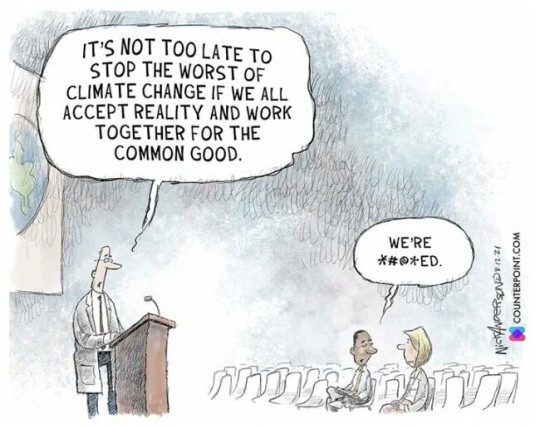
#comic#conservative comics make the left look so cool#comics#cartoons#cartoon#ecological#econotego#ecosystem#ecology#climate justice#climate leaders#climate science#climate activists ‘may try to wreck the rollout of voter id measures at the local elections’#climate emergency#climate change#climate crisis#climate action#climate and environment#jail climate criminals#climate challenges#ausgov#politas#auspol#tasgov#taspol#neoliberal capitalism#australia#fuck neoliberals#anthony albanese#albanese government
4 notes
·
View notes
Text
The future of food in a changing climate
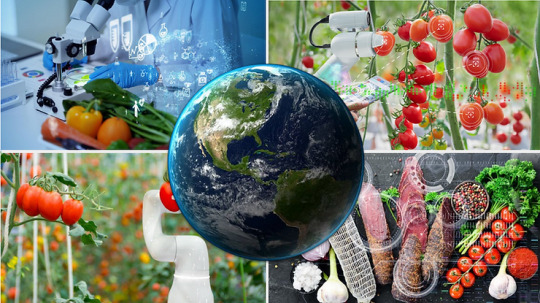
Written by: Jagriti Shahi, Business Analyst at Global Launch Base
Introduction
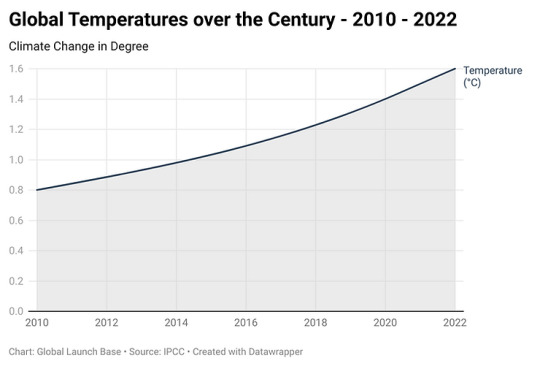
Figure 1: Global Temperature over the Century
This data shows that global temperatures have been rising steadily over the past few decades. The rate of warming is expected to accelerate in the coming years, if we do not take action to reduce greenhouse gas emissions.
The Intergovernmental Panel on Climate Change (IPCC) has warned that if we do not take action to reduce greenhouse gas emissions, global temperatures could rise by as much as 5.2 degrees Celsius by the end of the century. This would have devastating consequences for the planet, including more extreme weather events, rising sea levels, and mass extinctions. The data is clear that we are facing a serious challenge, and we need to take action now to reduce greenhouse gas emissions and mitigate the effects of climate change.
Climate Change and Food Production
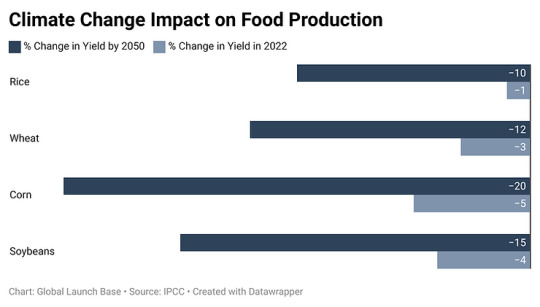
Figure 2: Climate Change Impact on Food Production
This data shows that the % change in yield of different crops by 2050 is already starting to be felt in 2022. For example, rice yields are already 1% lower in 2022 than they were in 2020. This is likely due to the combination of climate change and other factors, such as pests and diseases.
The trend is expected to continue in the coming years, as climate change continues to impact crop yields. This could have a serious impact on food security, as it will make it more difficult to produce enough food to feed the world's growing population.
The intricate relationship between climate change and food production is reshaping agricultural landscapes, challenging traditional practices, and compelling us to explore innovative solutions to ensure global food security. In this article, we delve into the intricate interplay between climate change and food production, highlighting the challenges faced and the potential pathways toward a more resilient future.
Altered Growing Conditions: One of the most immediate and palpable impacts of climate change on food production is the alteration of growing conditions. Rising global temperatures influence the length of growing seasons and shift the geographic suitability of certain crops. In some regions, this leads to reduced yields, as crops may experience stress due to excessive heat, prolonged droughts, or erratic precipitation patterns. Conversely, other areas might witness extended growing seasons, presenting opportunities to cultivate new varieties of crops.
Increased Pest and Disease Pressure: As the climate warms, pests and diseases that were once constrained by temperature limitations are expanding their ranges, posing significant threats to crops and livestock. The increased prevalence of pests can lead to reduced yields and necessitate more intensive use of pesticides, raising environmental concerns and potentially compromising food safety.
Water Scarcity and Agricultural Droughts: Climate change exacerbates water scarcity, a critical factor in agricultural productivity. Changing precipitation patterns and the intensification of droughts can jeopardize water availability for irrigation, which is essential for many crops. This can force farmers to compete for limited water resources, driving up costs and reducing overall agricultural output.
Impacts on Livestock Production: Livestock farming, a vital component of global food systems, is also vulnerable to the effects of climate change. Heat stress can lead to reduced livestock productivity, affecting meat and milk production. Moreover, changing forage availability due to altered precipitation patterns can challenge livestock feed supply, leading to increased costs for farmers.
Soil Degradation and Erosion: Climate change can exacerbate soil degradation and erosion, undermining agricultural sustainability. Intense rainfall events can lead to soil erosion, stripping away fertile topsoil and diminishing its ability to support crop growth. Soil degradation impacts soil structure, nutrient content, and water-holding capacity, posing a significant threat to long-term food security.
Adaptation and Mitigation Strategies: To address these challenges, a combination of adaptation and mitigation strategies is required.
Adaptation: Farmers can adopt climate-resilient practices such as crop diversification, agroforestry, and improved water management. Planting diverse crop varieties can spread risk and enhance resilience to changing conditions. Agroforestry systems, which combine trees with crops or livestock, can stabilize soil, conserve water, and provide additional income sources. Implementing efficient irrigation techniques and rainwater harvesting can help manage water scarcity.
Mitigation: Mitigating climate change through the reduction of greenhouse gas emissions is a critical step toward safeguarding food production. Sustainable land management, reforestation, and the adoption of renewable energy sources can contribute to lowering emissions from the agricultural sector.
7. Technological Innovations: Advancements in technology hold promise for enhancing climate resilience in food production. Precision agriculture utilizes data-driven approaches to optimize resource use, monitor crop health, and reduce waste. Climate-resilient crop varieties developed through traditional breeding or genetic modification can enhance yields under changing conditions.
8. Policy and International Cooperation: Global efforts are indispensable in addressing the complex challenges posed by climate change and food production. International agreements and policies can incentivize sustainable agricultural practices, support smallholder farmers, and promote technology transfer. Investment in research and development can drive innovation and provide farmers with the tools they need to adapt to changing conditions.
Key players in the market:
Impossible Foods: Impossible Foods is a food technology company that makes plant-based meat products that are indistinguishable from real meat. Impossible Foods' products use less water, land, and energy than traditional meat, and they emit significantly fewer greenhouse gasses.
Danone: Danone is a food and beverage company that has set a goal of becoming carbon neutral by 2050. Danone is working to reduce its greenhouse gas emissions across its entire value chain, from the farm to the fork.
Innovative Agricultural Practices
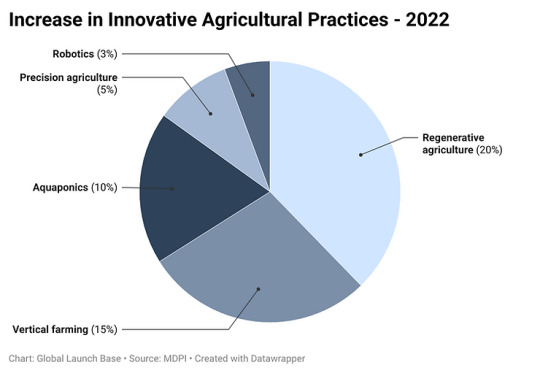
Figure 3: Increase in Innovative Agricultural Practices
This data shows that there is a growing interest in innovative agricultural practices. This is likely due to the increasing awareness of the environmental impact of traditional agriculture and the need for more sustainable food production methods.
Innovative Agricultural Practices: Navigating the Future of Sustainable Food Production
In a world where climate change and environmental degradation pose unprecedented challenges to traditional agricultural practices, innovation emerges as a beacon of hope. Innovative agricultural practices are essential not only for meeting the growing global demand for food but also for ensuring the long-term sustainability of our planet. In this article, we explore a spectrum of groundbreaking techniques that are transforming the way we cultivate crops, rear livestock, and manage natural resources.
Agroecology: Harmonizing Nature and Agriculture: Agroecology is a holistic approach that seeks to mimic natural ecosystems within agricultural systems. By fostering biodiversity, enhancing soil health, and minimizing external inputs, agroecological practices promote resilient and sustainable food production. Techniques such as intercropping, cover cropping, and crop rotation reduce the reliance on synthetic fertilizers and pesticides, mitigating the environmental impact of conventional agriculture.
Precision Agriculture: Merging Technology and Farming: Precision agriculture leverages cutting-edge technologies, including GPS, remote sensing, and data analytics, to optimize resource utilization and enhance productivity. By precisely mapping variations in soil and crop conditions, farmers can tailor irrigation, fertilization, and pest control measures, minimizing waste and maximizing yields. Drones, sensors, and automated machinery further streamline operations and minimize environmental footprint.
Vertical Farming and Hydroponics: Farming in Tight Spaces: Vertical farming and hydroponics redefine the boundaries of traditional agriculture by enabling food production in urban environments and underutilized spaces. Vertical farms stack crops in vertical layers, utilizing artificial lighting and controlled environments to optimize growth. Hydroponics, a soilless cultivation method, delivers water and nutrients directly to plant roots, reducing water usage and enabling year-round production.
Conservation Tillage and No-Till Farming: Preserving Soil Health: Conventional tillage practices disrupt soil structure and contribute to erosion, compaction, and carbon loss. Conservation tillage and no-till farming minimize soil disturbance, maintaining soil structure and organic matter. This enhances water retention, reduces erosion, and sequesters carbon, making farms more resilient to extreme weather events and contributing to climate change mitigation.
Aquaponics: Symbiotic Aquaculture and Hydroponics: Aquaponics integrates aquaculture (fish farming) and hydroponics in a mutually beneficial system. The fish waste provides nutrients for hydroponically grown plants, which, in turn, filter and purify the water for the fish. This closed-loop system conserves water, eliminates the need for synthetic fertilizers, and yields both protein and vegetables.
Controlled Environment Agriculture: Climate-Proofing Crop Production: Controlled environment agriculture (CEA) encompasses greenhouse and indoor farming, allowing year-round cultivation of crops under precisely managed conditions. CEA protects plants from extreme weather, pests, and diseases while optimizing resource efficiency. High-tech greenhouses use advanced climate control systems, enabling growers to fine-tune temperature, humidity, and light levels for optimal plant growth.
Permaculture: Designing Sustainable Ecosystems: Permaculture draws inspiration from natural ecosystems to create self-sustaining and regenerative agricultural systems. By integrating diverse plant and animal species, permaculture designs promote ecological harmony, resilience, and long-term productivity. Food forests, which emulate natural forests with layers of edible plants, exemplify permaculture principles and provide a wide array of harvestable foods.
Urban Agriculture: Nourishing Cities Locally: Urban agriculture transforms urban landscapes into productive spaces, mitigating the environmental impact of food transportation and enhancing food security. Rooftop gardens, community plots, and vertical farms bring fresh produce to city dwellers while fostering a sense of community and reconnecting people with their food sources.
Key players in the market:
Ceres Imaging: Ceres Imaging uses satellite imagery and artificial intelligence to help farmers make more informed decisions about their crops. Ceres Imaging's products can help farmers to identify pests and diseases early on, optimize their irrigation practices, and improve their yields.
AeroFarms: AeroFarms' vertical farms are located in urban areas, which helps to reduce the company's carbon footprint. AeroFarms also uses recycled materials in its farms and packaging, and it is committed to reducing its environmental impact.
Resilient Crop Varieties
The development of climate-resilient crop varieties through breeding and genetic modification is crucial. Scientists are working on crops that can withstand higher temperatures, require less water, and exhibit resistance to pests and diseases. Gene editing techniques like CRISPR-Cas9 offer precise methods to enhance desired traits, potentially revolutionizing crop production. However, careful consideration of ethical and environmental implications is essential in adopting such technologies.
As the world grapples with the uncertainties of a changing climate, ensuring a steady and nutritious food supply has become a paramount challenge. Resilient crop varieties, born from innovative breeding techniques and scientific advancements, offer a glimmer of hope in the face of shifting weather patterns, changing pest dynamics, and dwindling natural resources. In this article, we delve into the significance of resilient crop varieties and the transformative potential they hold for securing global food security.
1. The Need for Resilience
Traditional crop varieties, often developed for specific regions and historical climatic conditions, are increasingly vulnerable to the unpredictable and extreme weather events wrought by climate change. Droughts, floods, heatwaves, and new pest and disease pressures threaten agricultural productivity and food availability. Resilient crop varieties possess traits that enable them to withstand and recover from these challenges, ensuring a consistent supply of food even in the face of adversity.
2. Breeding for Resilience
The art and science of breeding resilient crop varieties involve a combination of classical breeding methods and cutting-edge technologies. Plant breeders select and cross plants with desirable traits, such as drought tolerance, disease resistance, and improved nutrient uptake. Advancements in molecular biology, genetic mapping, and gene editing techniques like CRISPR-Cas9 enable scientists to precisely manipulate plant genomes, accelerating the development of resilient varieties.
3. Drought-Resistant Varieties
Drought is a major concern for agricultural regions worldwide. Resilient crop varieties with enhanced water-use efficiency and deep root systems can thrive with limited water availability. Genetic modifications that control stomatal opening and closing, reducing water loss through transpiration, are being explored to confer drought tolerance.
4. Disease and Pest Resistance
Pests and diseases can devastate crop yields, leading to food shortages and economic losses. Resilient crop varieties can be engineered with natural pest repellents, reducing the need for chemical pesticides. Genetic markers linked to disease-resistance genes are identified to expedite breeding efforts, resulting in more robust crops.
5. Heat and Cold Tolerance
Extreme temperatures, whether scorching heat or chilling cold, disrupt plant metabolism and growth. Resilient crop varieties can be developed with genetic traits that enable them to thrive in temperature extremes. Heat-tolerant crops might possess heat-shock proteins that protect cellular structures, while cold-tolerant crops could have antifreeze proteins that prevent ice-crystal formation.
6. Salinity and Soil Adaptation
As sea levels rise and agricultural lands become salinized, crops need to tolerate higher levels of salt in the soil. Resilient crop varieties can be bred to thrive in saline conditions, ensuring continued food production on affected lands. Breeding for improved nutrient uptake and utilization also contributes to healthier plants and improved yields.
7. Biodiversity and Resilience
Maintaining a diverse array of crop varieties is essential for building resilience. Traditional and heirloom varieties often possess unique traits that can be crucial for adaptation. Initiatives to conserve and promote local crop diversity are essential for safeguarding food security in a changing world.
8. Ethical and Environmental Considerations
While resilient crop varieties hold immense promise, ethical and environmental considerations must guide their development and deployment. Ensuring that genetic modifications do not inadvertently harm ecosystems or reduce genetic diversity is a critical aspect of responsible breeding practices.
Key players in the market:
Monsanto: Monsanto is a multinational agricultural biotechnology corporation that develops and markets crop seeds, herbicides, and other agricultural products. Monsanto has a portfolio of resilient crop varieties that are tolerant to a variety of abiotic stresses, as well as some biotic stresses, such as pests and diseases.
Seminis: Seminis is a subsidiary of Bayer CropScience that develops and markets crop seeds. Seminis has a portfolio of resilient crop varieties that are tolerant to a variety of abiotic stresses, such as drought, heat, and salinity.
Sustainable Resource Management
Sustainable management of natural resources is pivotal to food security in a changing climate. Efficient water management, such as rainwater harvesting and drip irrigation, conserves water and ensures its availability during dry spells. Soil health restoration through techniques like cover cropping and reduced tillage enhances soil's capacity to retain water and nutrients. Integrated pest management minimizes chemical use and maintains a balance between pests and their natural predators.
Resilience Through Resource Efficiency: Sustainable resource management serves as a cornerstone for building resilience in the face of climate-related uncertainties. Efficient utilization of resources, such as water, energy, and soil, is paramount to ensure that food systems remain productive and adaptable. Through water-efficient irrigation methods, reduced energy consumption, and soil health enhancement, sustainable practices bolster the capacity of agricultural systems to weather the impacts of altered climatic conditions.
Water: A Precious Commodity: In a changing climate, water scarcity and variability become magnified challenges for agricultural production. Sustainable resource management involves optimizing water use through techniques like drip irrigation, rainwater harvesting, and integrated water management systems. By safeguarding water sources, improving distribution, and minimizing wastage, we ensure a consistent supply of this invaluable resource to sustain food production.
Soil Health and Carbon Sequestration: Healthy soils play a pivotal role in both climate mitigation and adaptation. Sustainable resource management practices prioritize soil health through reduced tillage, cover cropping, and organic matter enrichment. These strategies not only enhance soil fertility and water retention but also contribute to carbon sequestration, mitigating the atmospheric buildup of greenhouse gasses.
Biodiversity Conservation for Resilient Ecosystems: Preserving biodiversity within agricultural landscapes is central to sustainable resource management. Diverse ecosystems are more resilient to climatic fluctuations and provide natural pest control, pollination services, and soil fertility. Agroecological approaches, such as crop rotation, agroforestry, and maintaining habitat corridors, support diverse species and foster ecosystem health.
Circular Economy and Waste Reduction: A circular economy approach within food systems minimizes waste and resource depletion. Sustainable resource management encourages reducing food waste, adopting efficient packaging, and promoting composting or recycling of organic matter. By embracing a circular mindset, we reduce the burden on landfills, conserve resources, and limit the environmental footprint of food production and consumption.
Renewable Energy Integration: As we envision a climate-resilient food future, the integration of renewable energy sources into agricultural operations becomes essential. Sustainable resource management emphasizes transitioning from fossil fuels to renewable energy to power irrigation, processing, and distribution systems. Solar panels, wind turbines, and biogas facilities contribute to reducing emissions and enhancing overall sustainability.
Localized Food Systems and Resilient Communities: Sustainable resource management advocates for the development of localized food systems that prioritize regional resilience. By supporting small-scale farmers, community gardens, and farmers' markets, we enhance local food security and reduce the carbon footprint associated with long-distance transportation.
Policy, Collaboration, and Global Action: Effective sustainable resource management requires a collaborative effort encompassing policymakers, researchers, industries, and consumers. Governments can incentivize sustainable practices through policies, subsidies, and regulations. International cooperation is vital to share knowledge, innovations, and best practices, ensuring a collective response to the global challenge of climate change.
Key players in the market:
Veolia: Veolia is a French multinational water, waste management and energy services company. Veolia has a long history of sustainable resource management, and it is one of the world's leaders in the field. Veolia's water treatment plants are some of the most efficient in the world, and the company is also a leader in waste recycling and energy recovery.
Ecolab: Ecolab is an American multinational provider of water, hygiene and energy technologies and services. Ecolab is a leader in sustainable resource management, and the company has a number of programs and initiatives in place to reduce its environmental impact. Ecolab's water conservation programs have helped to save billions of gallons of water, and the company's energy efficiency programs have helped to reduce its energy consumption by millions of kilowatt-hours.
Climate-Resilient Livestock Farming
Livestock production is another area greatly affected by climate change. Heat stress reduces livestock productivity, and changing grazing patterns impact feed availability. Transitioning towards climate-resilient livestock farming involves improving animal genetics, optimizing feed formulations, and implementing better shelter and cooling systems. Alternative protein sources like insect farming and lab-grown meat might also play a significant role in ensuring a sustainable and climate-resilient protein supply.
Adapting to Changing Conditions: Climate-resilient livestock farming entails embracing adaptable practices that mitigate the impact of a changing climate on animal health, productivity, and well-being. Heat stress, a growing concern due to rising temperatures, can lead to decreased feed intake, reduced reproductive efficiency, and overall livestock productivity. Employing cooling measures such as shade structures, misting systems, and proper ventilation helps mitigate heat stress and maintain optimal livestock conditions.
Improved Breeding for Resilience: Selecting and breeding animals for climate resilience is a key facet of climate-resilient livestock farming. Breeding programs aim to develop livestock varieties that are better equipped to withstand heat stress, disease outbreaks, and changing feed availability. Genetic traits that confer heat tolerance, disease resistance, and efficient nutrient utilization contribute to animals better suited for a changing climate.
Sustainable Feed Sourcing: Climate-resilient livestock farming integrates sustainable feed sourcing practices to ensure the long-term availability of nutritious and environmentally friendly animal diets. Livestock production is a significant contributor to deforestation and land degradation, often driven by the demand for animal feed crops. Transitioning to alternative feed sources, such as algae, insect-based protein, and agroforestry byproducts, minimizes environmental impact while ensuring adequate nutrition for animals.
Precision Livestock Management: Advances in technology play a pivotal role in climate-resilient livestock farming through precision livestock management. Sensors, data analytics, and artificial intelligence enable real-time monitoring of animal health, behavior, and productivity. This data-driven approach enhances disease detection, facilitates targeted interventions, and optimizes resource utilization, contributing to both economic efficiency and animal welfare.
Agroecological Integration: Integrating livestock into agroecological systems fosters synergy between animal and crop production. Agroforestry, where livestock graze in wooded areas, enhances feed availability, carbon sequestration, and biodiversity. Rotational grazing, which involves moving animals between different pastures, prevents overgrazing, improves soil health, and enhances forage quality.
Alternative Livestock Systems: Exploring alternative livestock systems offers a promising avenue for climate resilience. Silvopasture combines trees with pasture, providing shade, forage, and carbon sequestration potential. Aquaculture and integrated fish-farming systems can complement traditional livestock production, diversifying income sources and protein supply.
Community Engagement and Knowledge Sharing: Climate-resilient livestock farming thrives in a collaborative environment where farmers, researchers, and communities exchange knowledge and best practices. Farmers' networks, extension services, and capacity-building initiatives facilitate the dissemination of climate-resilient techniques and encourage collective adaptation to changing conditions.
Policy Support and Incentives: Effective policies and incentives play a pivotal role in fostering climate-resilient livestock farming. Government support for research and development, funding for sustainable practices, and market incentives for climate-resilient products incentivize farmers to adopt and invest in these strategies.
Key players in the market:
Alltech: Alltech is a global animal nutrition company that develops and markets products and services for livestock producers. Alltech has a program called Alltech Climate Challenge that helps livestock producers reduce their environmental impact. Alltech Climate Challenge provides farmers with training on climate-friendly livestock farming practices, such as methane mitigation and water conservation.
Zoetis: Zoetis is a global animal health company that develops and markets products and services for livestock producers. Zoetis has a program called Zoetis Sustainable Agriculture that helps livestock producers improve their environmental performance. Zoetis Sustainable Agriculture provides farmers with training on sustainable livestock farming practices, such as reducing antibiotic use and improving manure management.
Reducing Food Waste and Loss

Figure 4: Food Waste by Category
This data shows that food waste is a major problem worldwide. It is estimated that one-third of all food produced for human consumption is wasted. This waste has a significant environmental impact, as it contributes to climate change, water pollution, and land degradation. Households are the biggest contributors to food waste, followed by food service and retail. Agriculture also contributes a significant amount of food waste, but this is often due to factors beyond human control, such as crop losses due to pests and diseases.
The Scale of the Challenge: Food waste and loss constitute a staggering paradox in a world where millions go hungry. According to the Food and Agriculture Organization (FAO), approximately one-third of all food produced for human consumption is lost or wasted annually. In a changing climate, this inefficiency takes on heightened significance, given the increased strain on agricultural resources and the urgent need to maximize production.
Climate Impacts and Food Loss: The impacts of climate change, including extreme weather events, temperature fluctuations, and altered growing seasons, exacerbate the problem of food waste and loss. Disrupted supply chains, reduced crop yields, and increased pest and disease pressures contribute to losses at every stage of the food system, from production to consumption.
Farm-Level Strategies: At the production level, climate-resilient agricultural practices are essential in minimizing food loss. Crop diversification, improved storage facilities, and effective pest management contribute to preserving harvests. Climate-smart irrigation and water management systems ensure that water resources are used efficiently, reducing losses due to drought-related crop failures.
Post-Harvest Innovations: Innovations in post-harvest technologies play a pivotal role in reducing food loss. Cold storage, modified atmosphere packaging, and controlled atmosphere storage systems extend the shelf life of perishable goods. Solar drying and value-addition techniques enable smallholder farmers to process excess produce into value-added products, minimizing waste and increasing income.
Efficient Distribution and Supply Chains: Efficient distribution and supply chains are central to addressing food waste. Improving transportation infrastructure, embracing digital solutions for real-time inventory management, and facilitating coordination between producers, distributors, and retailers can prevent perishable goods from spoiling before reaching consumers.
Consumer Behavior and Awareness: Shifting consumer behavior towards responsible consumption is essential in curbing food waste. Education campaigns, labeling initiatives, and community-driven efforts raise awareness about the consequences of wasting food and empower individuals to make conscious choices.
Food Rescue and Redistribution: Food rescue organizations and surplus food redistribution networks salvage edible food that would otherwise be discarded. These initiatives divert surplus produce from landfills to those in need, addressing both food waste and food insecurity simultaneously.
Policy and Industry Leadership: Government policies and private sector initiatives play a crucial role in reducing food waste and loss. Regulatory measures, tax incentives, and industry commitments to zero-waste goals drive systemic change across the food supply chain.
Key players in the market:
Too Good To Go: Too Good To Go is a Danish company that has developed an app that connects consumers with businesses that have surplus food. Businesses can list their surplus food on the app, and consumers can purchase it at a discounted price. Too Good To Go has helped to prevent millions of meals from being wasted.
RapidPricer: RapidPricer is an AI-powered pricing platform that helps retailers automate their pricing and promotions. The platform uses deep learning algorithms and machine vision to dynamically price products to match their real-time value based on competition, product lifecycle, and market conditions. With deep expertise in retail pricing, RapidPricer computes merchandising actions for real-time execution in a retail environment.
Policy and Global Cooperation
Mitigating the impact of climate change on food production requires global cooperation and effective policy measures. International agreements and frameworks can promote sustainable agriculture, support smallholder farmers, and facilitate technology transfer to developing countries. Financial incentives, subsidies for sustainable practices, and research funding can drive innovation and promote the adoption of climate-resilient technologies. 1. Policy as a Catalyst for Change Sound and visionary policies are the cornerstone of a resilient food system. Governments play a pivotal role in shaping the trajectory of food production, distribution, and consumption through regulations, incentives, and strategic planning. Policies that promote climate-resilient agriculture, sustainable resource management, and reduced food waste set the stage for a more secure and sustainable food future. 2. Climate-Smart Agriculture Policies Climate-smart agricultural policies harness innovative approaches to enhance productivity, mitigate climate impacts, and reduce emissions. By incentivizing the adoption of climate-resilient practices, such as crop diversification, agroforestry, and improved irrigation, governments foster adaptive capacity and mitigate the vulnerabilities of agriculture to a changing climate. 3. Research and Innovation Funding Government funding for research and innovation accelerates the development and adoption of climate-resilient agricultural technologies and practices. Support for breeding drought-tolerant crops, developing efficient irrigation systems, and advancing precision agriculture empowers farmers to overcome the challenges posed by climate change. 4. International Agreements and Frameworks The global nature of climate change demands international collaboration. Agreements like the Paris Agreement underscore the commitment of nations to combat climate change and lay the groundwork for coordinated efforts in the agricultural sector. Frameworks for technology transfer, capacity-building, and financial support ensure that countries with varying levels of resources can participate in climate-resilient food production. 5. Sustainable Trade and Supply Chain Policies International trade and supply chains are integral to global food security. Policies that promote sustainable trade practices, reduce trade barriers and ensure equitable access to markets contribute to stable food supplies and price stability, benefiting both producers and consumers. 6. Strengthening Smallholder Resilience Policies that specifically target smallholder farmers, who are often the most vulnerable to climate impacts, play a vital role in enhancing food security. Financial support, access to credit, and extension services empower smallholders to adopt climate-resilient practices and diversify their livelihoods. 7. Public-Private Partnerships Collaboration between governments, private sector entities, and civil society organizations amplifies the impact of climate-resilient policies. Public-private partnerships drive innovation, leverage resources, and facilitate knowledge exchange, ensuring that policies are implemented effectively and that a wide array of stakeholders are engaged. 8. Education and Consumer Awareness Policies that promote consumer education and awareness campaigns raise consciousness about sustainable consumption practices. Clear labeling, educational initiatives, and public awareness campaigns inform consumers about the environmental and social impacts of their food choices, influencing demand and driving market shifts.
Conclusion
The future of food in a changing climate is a complex challenge that demands immediate attention and collaborative efforts. Innovations in agriculture, sustainable resource management, and climate-resilient practices offer hope for ensuring food security for a growing global population. By embracing new technologies, promoting sustainable practices, and fostering international cooperation, we can navigate the challenges presented by a changing climate and build a more resilient and secure food future for generations to come. ------------------------------------ Global Launch Base helps international startups expand in India. Our services include market research, validation through surveys, developing a network, building partnerships, fundraising, and strategy revenue growth. Get in touch to learn more about us. Contact Info: Website: www.globallaunchbase.com LinkedIn: https://www.linkedin.com/company/globallaunchbase/ Email: [email protected]
#Climate change#Food security#Sustainable agriculture#Climate-resilient farming#Adaptation strategies#Agricultural innovation#Climate-smart technologies#Global food systems#Environmental impact#Crop diversity#Resource management#Food supply chain#Resilient livestock farming#Circular economy#Policy initiatives#Smallholder resilience#Sustainable sourcing#Climate challenges#Food waste reduction#Renewable energy integration
0 notes
Text
Street smarts
New Post has been published on https://thedigitalinsider.com/street-smarts/
Street smarts


Dozens of major research labs dot the streets of Kendall Square, a Cambridge, Massachusetts, neighborhood in which MIT partially sits. But for Andres Sevtsuk’s City Form Lab, the streets of Kendall Square themselves, and those in other cities, are subjects for research.
Sevtsuk is an associate professor of urban science and planning at MIT and a leading expert in urban form and spatial analysis. His work examines how the design of built environments affects social life within them. The way cities are structured influences whether street-level retail commerce can thrive, whether and how much people walk, and how much they encounter each other face to face.
“City environments that allow us to get more things done on foot tend to not only make people healthier, but they are more sustainable in terms of emissions and energy use, and they provide more social encounters between different members of society, which is fundamental to democracy,” Sevtsuk says.
However, many things Sevtsuk studies do not come with much pre-existing data. While some aspects of cities are studied extensively — vehicle traffic, for instance — fewer people have studied how urban planning affects walking and cycling, which most city governments seek to increase.
To counter this trend, several years ago Sevtsuk and some research assistants began studying foot traffic in several cities, as well as Kendall Square — how much people walk, where they go, and why. Most urban walking trips are destination-driven: People go to offices, eateries, and transit stops. But a lot of pedestrian activity is also recreational and social, such as sitting in a square, people-watching, and window-shopping. Eventually Sevtsuk emerged with an innovative model of pedestrian activity, which is based around these spatial networks of interaction and calibrated to observed people counts.
He and his colleagues then scaled up their model and took it to major cities around the world, starting with the whole downtown of Melbourne, Australia. The model now includes detailed street characteristics — sidewalk dimensions, the presence of ground floor businesses, landscaping, and more — and Sevtsuk has also helped apply it to Beirut and, most recently, New York City.
The project is typical of Sevtsuk’s research, which creates new ways to bring data to urban design. In 2023, Sevtsuk and his colleagues also released a novel open-source tool, called TILE2NET, to automatically map city sidewalks from aerial imagery. He has even studied interactions on the MIT campus, in a 2022 paper quantifying how spatial relatedness between departments and centers affects communications among them.
“Applying spatial analytics to city design is timely today because when it comes to cutting carbon emissions and energy consumption, or improving public health, or supporting local business on city streets, they relate to how cities are configured,” Sevtsuk says. “Urban designers have historically not been very focused on quantifying those effects. But studying these dynamics can help us understand how social interactions in cities work and how proposed interventions may impact a community.”
For his research and teaching, Sevtsuk received tenure at MIT earlier this year.
Growing and living in cities
Sevtsuk is originally from Tartu, Estonia, where his experiences helped attune him to the street life of cities.
“I do think where I come from enhanced my interest in urban design,” Sevtsuk says. “I grew up in public housing. That very much framed my appreciation for public amenities. Your home was where you slept, but everything else, where you played as a child or found cultural entertainment as a teenager, was in the public sphere of the city.”
Initially interested in studying architecture, Sevtsuk received a BArch degree from the Estonian Academy of Arts, then a BArch from the Ecole d’Architecture de la Ville et des Territoires, in Paris. Over time, he became increasingly interested in city design and planning, and enrolled as a master’s student at MIT, earning his SMArchS degree in 2006 while studying how technology could help us better understand urban social processes.
“MIT had a very strong research orientation for even masters-level students,” Sevtsuk says. “It is famous for that. I came because I was drawn to the opportunity to get hands-on into research around city design.”
Sevtsuk stayed at MIT for his doctoral studies, earning his PhD in 2010, with the late William Mitchell as his principal advisor. “Bill was interested in the influence of technology on cities,” says Sevtsuk, who appreciated the wide-ranging intellectual milieu that sprang up around Mitchell. “A lot of fascinating and intellectually experimental people gravitated around Bill.”
With his PhD in hand, Sevtstuk then joined an MIT collaboration at the new Singapore University of Technology and Design, a couple of years after it first opened.
“That was a lot of fun, building a new university, and we were teaching the first cohort and first courses,” Sevtsuk says. “It was an exciting project.”
Living in Asia also helped open doors for some hands-on research in Singapore and Indonesia, where Sevtsuk worked with city governments and the World Bank on urban planning and design projects in several cities.
“There was not a lot of data, and yet we had to think about how spatial analyses could be deployed to support planning decisions,” Sevtsuk says. “It forced you to think how to apply methods without abundant data in the traditional sense. In retrospect some of the software around pedestrian modeling we developed was influenced by these constraints, from understanding the minimum data inputs needed to capture people’s mobility dynamics in a neighborhood.”
From Melbourne to the Infinite Corridor
Returning to the U.S., Sevtsuk took a faculty position at Harvard University’s Graduate School of Design in 2015. He then joined the MIT faculty in 2019.
Throughout his career, Sevtsuk’s projects have consistently added insight to existing data or created all-new repositories of data for wider use. His team’s work in Melbourne leveraged a rare case of a city with copious pedestrian data of its own. There, Sevtsuk found the model not only explained foot traffic patterns but could also be used to forecast how changes in the built environment, such as new development projects, could affect foot traffic in different parts of the city.
In Beirut, the modeling work on improving community streets is part of post-disaster recovery after the Beirut port explosion of 2020. In New York, Sevtsuk and his colleagues are studying the largest pedestrian network in the U.S., covering all five boroughs of the city. The TILE2NET project, meanwhile, provides information for planners and experts in an area — sidewalk mapping — which most places do not have data on either.
When it came to studying the MIT campus, Sevtsuk brought new a new approach to a subject with an Institute legacy: An earlier campus professor, Thomas Allen of the MIT Sloan School of Management, did pioneering research about workspace design and collaboration. Sevtsuk and his team, however, looked at the larger campus as a network.
Linking spatial relations and email communication, they found that not only does the level of interaction between MIT departments and labs increase when those units are spatially closer to each other, but it also increases when their members are more likely to walk past each other’s offices on their daily routes to work or when they patronize the same eateries on campus.
Urban design for the people
Sevtsuk thinks about his own work as being not just data-driven but part of a larger refashioning of the field of urban design. In American cities, urban design may still be associated with the large-scale redevelopment of neighborhoods that took place in the first few postwar decades: massive freeways tearing through cities and dislocating older business districts, and large housing and office projects undertaken in the name of modernization and tax revenue increases but not in the interests of existing residents and workers. Many of these projects were disastrous for urban communities.
By the 1960s and 1970s, urban planning programs around the country attempted to quell the inadequacy of large-scale urban design and instead focused on the social and economic needs of communities first. The role of urban design was somewhat sidelined in this transition. But instead of giving up on urban design as a tool for community improvement, Sevtsuk thinks that planning and urban design research can help uncover the important ways in which design can support communities in their daily lives as much as community development initiatives and policies can.
“There was a turn in the field of planning away from urban design as a central area of focus, toward more sociologically grounded community-driven approaches,” Sevtsuk says. “And for good reasons. But during these decades, some of the most anti-urban, car-oriented, and resource-intensive built environments in the U.S. were created, which we now need to deal with.”
He adds: “In my work I try to quantify effects of urban design on people, from mobility outcomes, to generating social encounters, to supporting small local businesses on city streets. In my research group we try to connect urban design back to the qualities that people and communities care about. Faced with the profound climate challenges today, we must better understand the influence of urban design on society — on carbon emissions, on health, on social exchange, and even on democracy, because it’s such a critical dimension.”
A dedicated teacher, Sevtsuk works with students with broad backgrounds and interests from across the Institute. One of his main classes, 11.001 (Introduction to Urban Design and Development), draws students from many departments — including computer science, civil engineering, and management — who want to contribute to sustainable and equitable cities. He also teaches an applied class on modeling pedestrian activity, and his research group draws students and researchers from many countries.
“What resonates with students is that when we look closely at the complex organized systems of cities, we can make sense of how they work,” Sevtsuk says. “But we can also figure out how to change them, how to nudge them toward collective improvement. And many MIT students are eager to mobilize their amazing technical skills towards that quest.”
#2022#2023#amazing#American#analyses#Analysis#Analytics#approach#architecture#Arts#Asia#Australia#bank#Building#Business#Capture#carbon#carbon emissions#career#change#cities#civil engineering#classes#climate#Climate Challenges#Collaboration#Collective#Commerce#communication#communications
0 notes
Photo




(via "Sustainability & Climate Action for Our Children’s Future" Sticker for Sale by harmzk90)
#findyourthing#climate change#climate crisis#climate action#sustainability#future generations#protect the planet#eco friendly#enviroment art#sustainableliving#climate challenges#save the planet#go green#ecology#nature connection#nature conservation#eco conscious#green future
1 note
·
View note
Text
Whats frustrating to me is that gen z is enjoying the fruits of incredibly hard-won progressivism in this country while simultaneously being fed conservative ideals which tell them to look around, you don't have to grow up, you don't have to confront yourself and think critically about the world. And they have spent their formative adult years having their cake and eating it too. I just hope they understand how much that conservatism will betray them. I hope that all those young ladies who want to be tradwives and all those young men who believe in a nonsensical alpha hierarchy are eventually able grow up a little bit.
#not to erase the very real challenges gen z faces#housing#jobs#climate#and the effects of social media/covid isolation on them#but uhhhh how do i put this..............for the gen z that have fallen down the rabbit hole: you dont know what a real problem is#thanks to this election they're gonna find out#i just hope they can learn
2K notes
·
View notes